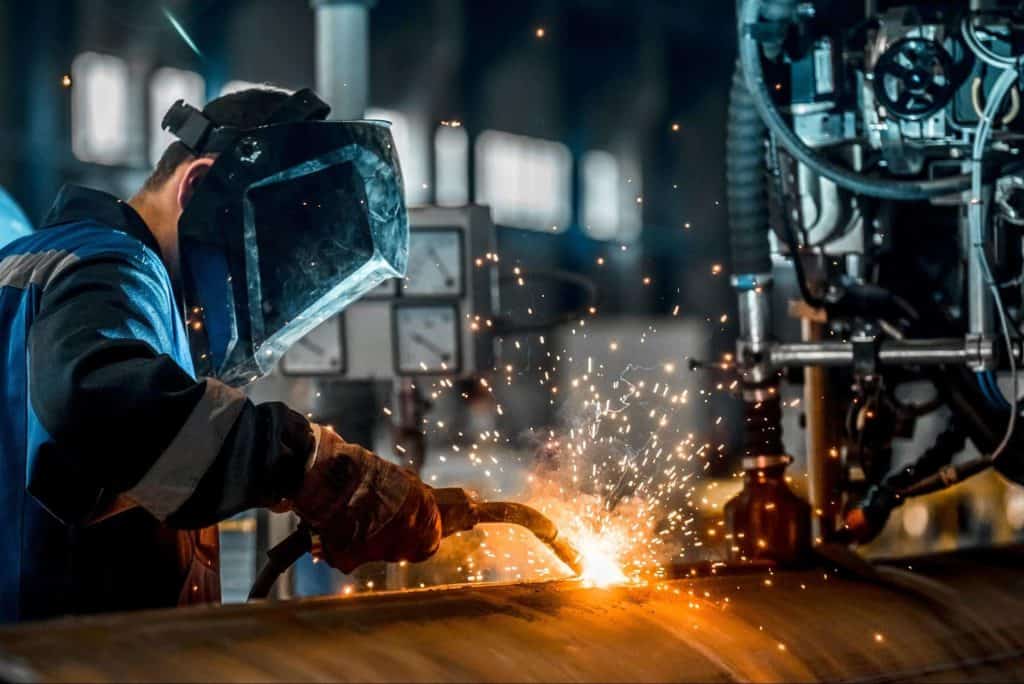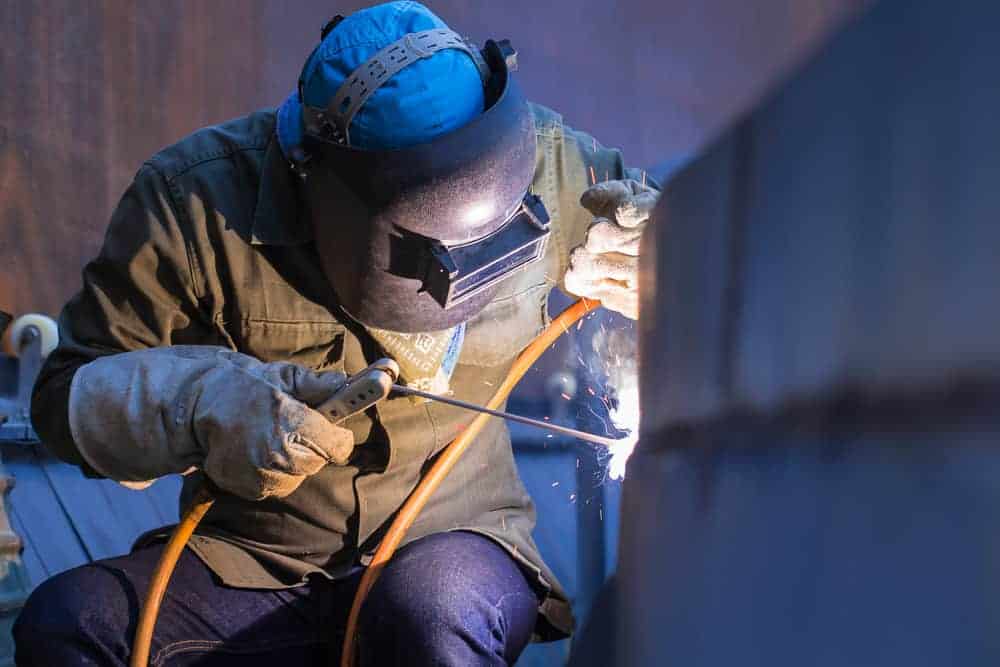Discover Advanced Welding Inspection Milwaukee Approaches for Precision
Discover Advanced Welding Inspection Milwaukee Approaches for Precision
Blog Article
Trick Variables to Take Into Consideration in Welding Assessment for Quality Control
Welding assessment is a vital facet of quality assurance that includes numerous elements necessary for ensuring the stability of bonded frameworks. The interaction of these elements raises additionally inquiries concerning how they can be enhanced to improve total welding top quality.
Kinds Of Welding Processes
Welding processes incorporate a selection of techniques utilized to join materials, mainly steels, with the application of warmth, stress, or both. One of the most usual kinds of welding procedures consist of arc welding, gas welding, resistance welding, and solid-state welding.
Arc welding, which consists of approaches like Shielded Steel Arc Welding (SMAW) and Gas Tungsten Arc Welding (GTAW), uses an electrical arc to create warmth for thawing the base steels and filler products. Gas welding, usually described as oxy-fuel welding, makes use of a fire generated by melting a fuel gas with oxygen to thaw the steels.
Resistance welding, including area and seam welding, depends on the heat generated from electrical resistance to bond products, typically used in automotive production. Solid-state welding procedures, such as rubbing welding and ultrasonic welding, join materials without thawing them, making use of mechanical stress and frictional heat.
Each welding procedure has details applications, staminas, and constraints, making the option of the ideal method important for accomplishing desired weld quality and efficiency. Welding Inspection Milwaukee. Recognizing these processes is vital for guaranteeing effective welding techniques and sustaining high quality assurance in manufacture and manufacturing industries
Examination Strategies and Tools
To guarantee the honesty and dependability of welded joints, numerous evaluation techniques and devices are employed throughout the welding procedure. These techniques can be generally categorized right into non-destructive testing (NDT) and devastating testing (DT) methods. NDT techniques, which do not compromise the stability of the welded part, include aesthetic evaluation, ultrasonic screening, radiographic testing, magnetic fragment testing, and fluid penetrant screening.
Visual examination is the most basic technique, permitting the immediate identification of surface area defects. Ultrasonic screening makes use of high-frequency acoustic waves to spot inner defects, while radiographic screening employs X-rays or gamma rays to imagine the inner structure of welds. Magnetic bit screening is effective for finding surface area and near-surface gaps in ferromagnetic products, and fluid penetrant testing exposes surface-breaking flaws by using a colored dye or fluorescent penetrant.
On the various other hand, devastating testing involves physically checking the bonded joint until failure to evaluate its mechanical properties. Devices such as tensile testing devices, impact testers, and hardness testers are normally used in this context. By employing a combination of these strategies and tools, assessors can make certain the quality and safety of welded structures.

Value of Paperwork
In the realm of welding examination, correct paperwork serves as an essential backbone for quality control and regulative conformity. Paperwork encompasses a vast array of documents, including weld treatment specs, inspection records, and non-destructive testing outcomes. These records not just provide a sequential account of the evaluation procedure but additionally function as a referral for future assessments and audits.
Exact documentation makes sure that all welding activities are deducible and proven, facilitating adherence to appropriate sector requirements and codes. It comes to be important throughout the testimonial process, enabling stakeholders to analyze compliance with specs and recognize any defects or variances. Thorough records support efficient interaction amongst group participants and external auditors, fostering a culture of transparency and accountability.
In addition, well-maintained paperwork can dramatically reduce the risk of pricey rework or failings. By ensuring that all required info is taped and obtainable, companies can simplify their quality control processes, ultimately enhancing the integrity of the bonded frameworks. Spending time and resources into producing robust documentation practices is not just a step-by-step demand but a strategic important for achieving lasting success in welding procedures.
Worker Qualifications and Training
How can companies make sure the competency of their welding employees? To keep high requirements of quality guarantee, it is necessary for organizations to purchase thorough training programs tailored to the specific needs of the welding industry. Welding Inspection Milwaukee. This entails not only initial training yet also continual education to maintain workers abreast of evolving modern technologies and approaches
Organizations ought to develop clear criteria for employees qualifications, consisting of relevant accreditations and experience in various welding methods. Employing licensed welding assessors (CWIs) can enhance the top quality of inspections, as Learn More Here these experts have the required expertise to ensure and recognize possible defects adherence to finest practices.
Along with technological skills, companies need to promote a culture of security and conformity amongst their welding personnel. Supplying normal workshops and refresher programs can aid enhance the significance of security methods and the implications of non-compliance.
Additionally, companies need to apply performance assessments and comments systems to analyze employees competency over time. By systematically dealing with training requirements and advertising a dedication to high quality, companies can boost their welding examination procedures, inevitably leading to improved item honesty and customer satisfaction.
Compliance With Industry Standards
Complying with sector criteria is extremely important for ensuring the top quality moved here and safety and security of welding procedures. Conformity with well established requirements, such as those set by the American Welding Society (AWS), American National Standards Institute (ANSI), and International Organization for Standardization (ISO), offers a framework for assessing the integrity of bonded frameworks. These requirements encompass various facets of welding, including material selection, layout specs, and procedural techniques.
Welding examinations have to be carried out according to these standards to validate that the work meets the needed high quality criteria. This consists of aesthetic evaluations, non-destructive screening (NDT), and complete paperwork of findings. Making certain compliance not just improves the integrity of the welds however also minimizes dangers related to structural failures.
Moreover, adherence to sector standards cultivates a culture of safety and security and expertise within the workforce. It develops a benchmark for efficiency and encourages constant improvement with normal audits and training. Eventually, conformity is not just a regulative requirement; it is a commitment to quality that safeguards both employees and the environment while providing premium welding items.
Verdict

Welding examination is a vital facet of high quality guarantee that encompasses different factors vital for ensuring the stability of bonded structures.To guarantee the honesty and reliability of welded joints, numerous inspection methods and devices are used throughout the welding process.In the realm of welding assessment, proper documentation offers as an essential backbone for high quality guarantee and regulative conformity.Welding inspections should be performed in conformity with these standards to validate that the job meets the required high quality requirements.In conclusion, efficient welding evaluation for quality assurance needs a multifaceted approach that includes the choice of proper examination techniques, strict adherence to industry standards, and extensive paperwork of results.
Report this page